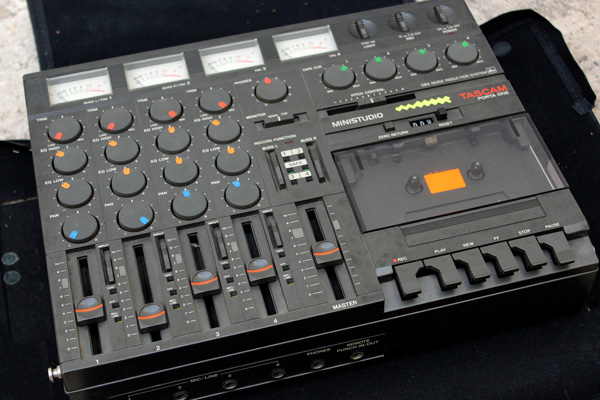Continue to discover other ridiculous songwriting tips that actually work…
10. Arrange a reward system
When Brian Wilson was struggling along with his personal songwriting—amongst other issues—he was reportedly rewarded with cheeseburgers for each music he wrote.
Brian’s system was fairly excessive. However, the idea is actually sensible. Songwriting work is hard.
If there’s a bit of gear that you’re eyeing or a new studio toy you need, inform yourself that you need to write 5 songs before you even think about shopping for it.
This provides you with one thing to work in the direction of beyond the satisfaction of being completed with a song—which is a fairly nice reward in itself.
11. The Mozart impact
No, I’m not about to inform you to listen to Mozart after which do what he did. That might be cheating proper?
However, there may be another excuse to hearken to Mozart. Listening to Mozart has been studied and proven to have a positive impact on your focus.
It impacts your ‘spatial-temporal reasoning.’ Which is mainly a fancy word for focus. Beginning your session with a little bit of Mozart will put your mind into excessive gear.
Excellent for pumping out some quality songwriting work. Copying a couple of his phrases and melodies can’t hurt both… Simply ensure you make ’em your individual!
12. Copy a song completely from memory
What would it sound like should you try to re-record Bohemian Rhapsody proper now without listening to it to refresh your memory?
Most likely nothing like the unique! That’s why making an imperfect copy may be such an amazing inventive technique.
It actually worked for Dirty Projector’s Dave Longstreth. The band’s excellent 2007 LP Rise Above is a full-length cover of Black Flag’s legendary 1981 album Damaged.
Longstreth apparently hadn’t listened to the unique tracks in a number of years and the outcomes are a strikingly inventive tackle the traditional album
13. Use extended strategies
Extended strategies are all about taking part in your instrument the “wrong” approach.
The idea was developed within the 20th century to assist composers to push the boundaries of what was attainable with conventional instrumentation.
The most well-known instance might be John Cage’s infamous “prepared piano” that included forks caught between the strings and objects positioned all through the mechanics.
However, extended strategies aren’t only for stuffy educational music. You would possibly even think about Dave Davies’s determination to slash the speaker cone of his amplifier on “You Really Got Me” an extended method.
The rugged, distorted guitar sound set the tone for an entirely new generation of music—that’s raw creativity!
Get it into your songwriting work with extended strategies.
14. Study a new scale
Diving into new music theory ideas is all the time a good way to stimulate your songwriting chops.
As a lot as they’re helpful, minor, major, and pentatonic scales can appear stale and dry in case you’re caught in a rut.
Why not attempt incorporating some lesser-known scales into your songwriting workflow?
Are you aware of your modes yet?
What concerning the whole-tone scale, or the microtonal world of Euler-Fokker scales?
You don’t have to spend time studying methods to play a lesser-known scale in your instrument either, there are loads of MIDI sequencing tools that make it simple to sequence notes to a specific scale.
15. Use a tape machine
Setting restraints around your songwriting workflow is all the time a good way to fuel creativity.
It’s enjoyable working inside a field and it may assist with discovering the proper musical colors to paint inside or exterior the traces.
One such field that’s stood the check of time is the traditional four-track tape machines that have been popularized by TASCAM within the 80s and 90s.
It’s primarily an analog DAW that makes it attainable to record up to 4 tracks onto tape.
Even today many artists use these easy classic tape machines to flesh out demos and even get a lo-fi sound.
Recording with one is simple should you play guitar or keys and have entry to a mic and pre-amp.
Begin out by writing down your music construction, then resolve on a chord development to record onto observe one, after that write out the harmonies, vocals, and lead lines on the remaining tracks.
In fact, in case you don’t need to purchase all that gear you possibly can always use a free songwriting app, like Spire, in your smartphone—to me it actually emulates that traditional tape machine workflow and you’ll take it anywhere!
Photo by Jose Mesa / CC 2.0
16. Do a sound walk
Your neighborhood is full of fascinating sounds. Why not go discover them, record them, and put them into your individual context?
Just seize your field recorder (the smartphone in your pocket is a good starter) and hit the streets.
Consider places around you where you possibly can get a fascinating snippet to sample—loud conversations at your native Italian coffee shop, college students wandering house late at night throughout frosh week, birds within the morning, church bells ringing, rainfall… the list goes on and on.
When you record them, they’re sounds that solely you could have. So get impressed and discover some songwriting inspiration with a fastidiously considered sound walk.
17. Stream of consciousness
Stream of consciousness is very popular in writing circles. Besides, poets and authors have used the method to spur on concepts and faucet into subconscious thoughts.
The method interprets pretty properly to writing music but there are some things to remember when attempting it.
Sit down, chill out and seize your instrument of selection, overlook everything you recognize about music ideas and guidelines or construction, and dial in an amazing tone, and decide some effects you want.
Now all you need to do is stare out the window and play whatever comes to your thoughts. Let your thoughts and your fingers guide you and have a little unstructured self jam.
After a while, you might discover some patterns, chords, and notes you want. Besides, make note of them and begin understanding a riff or lick you’d prefer to attempt constructing a song around.
18. The Pomodoro Method
The Pomodoro Method is an effective way to remain focussed, keep a flow state, and get issues done faster.
It was developed within the 1990s by Francesco Cirillo to divide sections of focussed work and break time into blocks of time.
Pomodoro in this case refers to the tomato-shaped timer the Italian used to develop the concept throughout his college days.
The blocked time schedule songwriting work as follows—25 minutes of focussed work (additionally referred to as a Pomodoro) on the task at hand after which 5 minutes of break time.
These blocks are to be timed and adhered to strictly with the premise being that brief spurts of focussed work can improve mental readability and focus.



